Nik Sharma's Blog, page 10
September 13, 2020
The Flavor Equation: Deep Dive into Emotion and Taste
With six weeks left until my new cookbook, The Flavor Equation, comes out, it’s time to not only give you a taste of what to expect (no pun intended!), but to take you on a journey to explore what I’ve identified to be the six components that make up Flavor. From today until October 27th, I’ll take a closer look at each element that makes up The Flavor Equation: Emotion, Sight, Sound, Mouthfeel, Aroma, and Taste. Plus, I’ve created special bonus content and partnered with some amazing brands to amplify each element and get you immersed in the experience. Excited? I am too. Keep reading to find out more.
EMOTION AND TASTE
I’m kicking it off with the two fundamental components of The Flavor Equation: Emotion and Taste. At its core, much of what we do in the kitchen and at the table is experimentation, not only with aroma and taste senses, but also what we see and hear and the emotions they trigger in us. Some of my behaviors are tied to memory; others might be explained by evolution and genetics. I avoid cooking or writing recipes for the Indian squash doodhi, bitter melons (karela), or turnips, nor will I eat excessively ripe bananas, not only because I strongly dislike the texture, smell, and taste of these foods, but also because my parents forced me to eat the first two vegetables as a kid—which scarred me for life. As an adult, I exercise my free will by staying away from these foods.
I don’t think I’m exaggerating when I say 2020 has been a rough year for all of us. During this time, I’ve found myself turning to sweet and tart lemon ice cream, crispy dosas, and ripe sweet peaches on top of bowls of warm rice pudding--comfort foods that evoke a sense of familiarity. The flavors of these ingredients trigger memories woven with happiness and comfort, a much needed experience right now.
What you eat and the flavors you experience transform, over time, into a repository of flavors that can evoke a variety of emotional responses. Our brain pays careful attention and files away memories of these reactions. This learning process between flavors and emotion is constant.
I developed more than 100 recipes for The Flavor Equation that I’ll forever associate with the process of creating this cookbook. Inevitably though, I had to pull some recipes for space reasons. It was hard to choose which ones to let go, but luckily I was able to hold on to them to still share with you today. When you pre-order The Flavor Equation and share your information on this page, you’ll get immediate access to those 8 BONUS RECIPES. You can start cooking and literally get a taste of what’s to come while you wait for the book to arrive in October (told you it wasn’t a pun)!
Also while you wait, share pictures of the dishes you make on Instagram. I always love seeing the reactions to my recipes, and when you use #TheFlavorEquation and tag me,
@abrowntable
, plus
@chroniclebooks
@caoliveranch
@spiceology
and
@staub_usa
, you’ll get a chance to win a collection of some of my favorite kitchen products that I use at home and also in The Flavor Equation.
More info here
and I’ll be sharing more about this in the coming weeks.
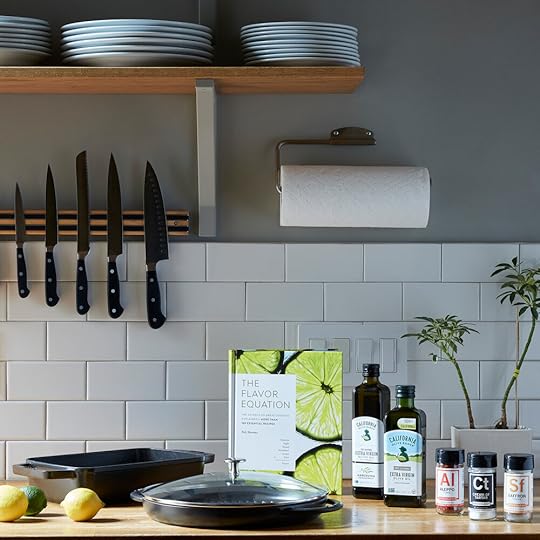
While many of you have your favorite places to order online, I wanted to make you aware of a Bookshop.org. Ordering through Bookshop.org helps independent bookstores all across the country generate online sales, especially when many indie bookstores rely on foot traffic that’s been down due to the pandemic. In addition, I’m donating all the revenue from my affiliate link with Bookshop.org to Feeding America. I support Feeding America because they’ve been on the ground doing their best to provide food meals to more than 40 million people a year and that number unfortunately is increasing as we face COVID and the wildfires in California (where I live). Through a network of 200 food banks and 60,000 food pantries and by supporting programs that minimize food waste and improve food security, Feeding America is working hard to solve hunger, which I admire and respect.
Of course, you can also order directly from the indie bookstores. In fact, some of my favorite bookstores below are providing SIGNED COPIES via the magic of bookplates.
Now Serving LA
Kitchen Arts & Letters
Book Larder
Omnivore (SF)
Powells
Bookshop Santa Cruz
That’s all I have for you this week and I hope you enjoyed your first stop on the journey through Flavor. I can’t wait to hear what you think about the bonus recipes and I hope you’ll join me in supporting indie bookstores and Feeding America. Lots more to come, so be sure to subscribe to my newsletter if you aren’t already and follow me on Instagram.
For more details:
https://niksharma.chroniclebooks.com

September 7, 2020
pan-fried salmon with green coconut chutney
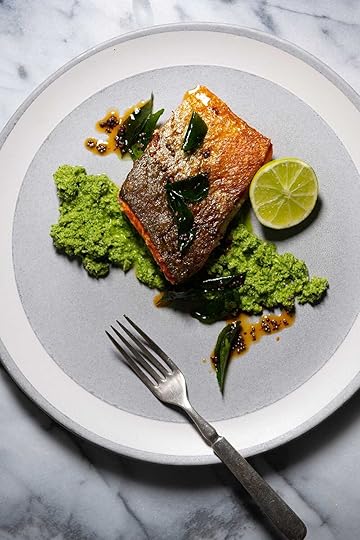
We’re in the midst of a heat wave with triple digit temperatures and wildfires amidst this pandemic. My potted fig plants took a beating and I’ve moved them indoors out of direct sunlight. Once the weather cools off a little in fall, I’ll get to planting them in the ground, till then they’re going to need a lot of extra TLC. Not surprisingly, I’ve avoided my oven but for some ironic reason, I feel the urge to bake something grow strong and I suspect I will bake something soon.
This week I have a new recipe for you up at the New York Times Cooking Section and it involves coconut and curry leaves among other delicious things. It’s a quick meal that you can put together and a good one to eat during summer (truth be told, I’d eat it year round). Recipe: Pan-Fried Salmon with Green Coconut Chutney.
In book related news, The Flavor Equation was named one of the most exciting cookbooks by both Paula Forbes who runs the cookbook newsletter - Stained Page News and also by Now Serving LA (the cookbook store where you can preorder signed copies of my book) at Taste [Articles - and Now Serving LA]. And for those of you that want to try and cook something from my new book, Epicurious has the recipe for my Sumac and Saffron Refresher for you to try.
Stay safe!
August 31, 2020
spicy lamb chops with tomatoes and mint

Disclaimer: This post was sponsored by the American Lamb Board . All opinions expressed are solely my own.
A few days ago, we moved amidst a sweltering heat wave in Southern California. Our house is on a hill with quite a few steps so you can only imagine the workout. On day one, I fell asleep by 7pm and woke up in the middle of the night to the sound of crickets whispering in the quiet backdrop. But despite all of this, we are very excited for several reasons one of them being the ability to garden again (I missed my old garden in Oakland) and we now have a backyard to grill, smoke, and barbecue!
Between packing, moving, and unpacking, I lacked the desire to create an elaborate first meal in the house. When it’s hot my appetite tends to decrease. Instead, I opted for a quick lamb chop recipe where spices take the center stage and served them with a generous helping of ripe tomatoes and fresh mint. All these flavors go well in summer and we polished our plates off with a bottle of wine. I used American lamb chops and make sure you rub the meat and the sides well to get all the sides covered with the spice mixture. Opt for tomatoes that are either medium to small like the early girl variety I used here or even cherry and grape tomatoes. With the smaller variety of tomatoes, I don’t always cut them in half, that decision I leave up to you. Serve this dish warm with a chilled glass of limeade or wine.
spicy lamb chops with tomatoes and mint
Makes 4 servings
For the lamb
1/4 cup [60ml] extra-virgin olive oil
4 garlic cloves, peeled and grated
2 teaspoons ground black pepper
2 teaspoons kosher salt
1 ½ teaspoon red pepper flakes such as Aleppo or Urfa
1 teaspoon dried oregano
6 American lamb chops (about 2 lbs [680 g] total weight), bone-in about 1 inch [2.5 cm] thick
1 tsp ground sumac
For the tomatoes
16oz [435g] early girl tomatoes (or your favorite tomato variety), halved
3 tablespoons chopped mint
2 tablespoons extra-virgin olive oil
1 tablespoon apple cider vinegar
Kosher salt
In a small bowl mix 3 tablespoons of the olive oil, garlic, black pepper, salt, Aleppo, and oregano. Rub this mixture over the lamb chops, and leave covered in a medium bowl or plate for 1 hour in the refrigerator.
When ready to cook, preheat the oven at 400F [200C].
Heat a cast iron or oven-proof skillet over high heat. Add the oil and swirl the pan to coat well. When the pan is hot, add the lamb chops, sear on each side for about 2 minutes, till they start to turn light brown. Transfer the skillet to the oven and cook till the lamb chops reach an internal temperature of 145F [62C], followed by a 3 min minute rest. Remove the chops from the pan and place them in a serving dish and cover with foil.
While the lamb rests, prepare the tomatoes. Place the tomatoes in a medium bowl. Add the mint. Add the olive oil and vinegar, season with salt and toss to coat well.
When ready to serve, sprinkle the sumac over the lamb chops and serve with the tomatoes.
August 18, 2020
the flavor equation - how to illustrate a book
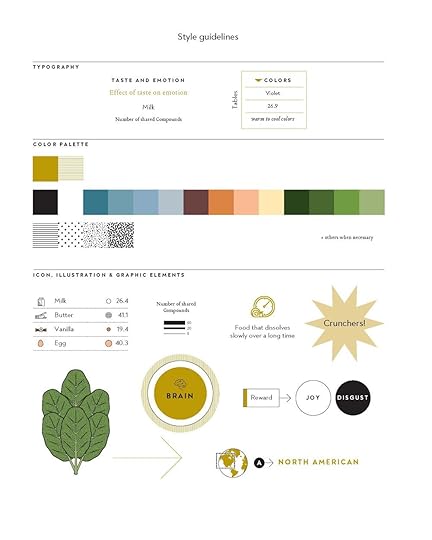
Based on my experience with Season, I had some sense of what to expect in terms of work flow and how things would more or less proceed during the production process of my second book, The Flavor Equation but when it came to the illustration process, I was swimming in unchartered territories. It’s easier for me to work on photography, styling, and writing but the illustrations simply aren’t my skill (no matter how hard I try).
The Flavor Equation is a science based cookbook and some ideas and examples are easier illustrated than conveyed through long sentences and sometimes a photograph might not be best option. Illustrations made science fun for me in school and provided an easier way to conceptualize science in a more tangible way. Hence, early on when I sold my book proposal to my publisher, Chronicle Books, I brought up the need for an illustrator. While working through my manuscript, I turned in several hand drawn sketches that I drew out on my iPad (Notes and The Concepts App were lifesavers) that I shared with my book designer, Lizzie Vaughn and my editor, Sarah Billingsley. They then looked through several portfolios of illustrators who had experience with science artwork but also for people who could make science through their art approachable, fun, and also tie in with my own style of photography and design. Among the portfolios, I looked at, one artist’s work immediately stood out and I connected with it immediately - Matteo Riva. Together we made a list of illustrations and worked through them together, finessing them with every iteration, and some how we managed to get all of this done as the COVID pandemic started to kick off everywhere.
Lizzie worked out fonts, design concepts, etc with Matteo and one of the first things I received was the image you see on top with the design/artwork scheme for The Flavor Equation. They made my sketches and tables (somewhat crazy and all-over-the-place style) beautiful and I am so happy with how they turned out. In fact, I’m going to get a couple of them printed to hand in my kitchen and office.
You now know about my thoughts on illustrations but what about Lizzie and Matteo, I decided to ask them a few questions and this is what they had to say.

First up, my wonderfully talented book illustrator, Matteo Riva.
What is the process of choosing an illustrator like?
I generally start from some references/precedents where I can find inspiration. In the past I collected several books dedicated to infographics and they are still very precious, especially once you start a new project. Second step: I sketch some proposals on paper, in order to keep in mind the general structure of the artwork. Third step: finally, I start to make drawing with Adobe Illustrator. At the early stage I try to fit the page with all the contents required (ie. Text, charts). Then I move the elements inside the page space to find the best way to communicate the information. In the meanwhile, in my mind I try to visualize one ore more illustrated elements associated to the contents. It could be an icon, a big illustration, or typographical elements. The purpose is to design a well balanced artwork where texts and informations are exposed clearly using an illustrated language.
How did you tailor the art scheme/brand guidelines—colors and styles—to fit the book's science and food themes?
I can answer by giving you my definition of what an infographic is, in simple words. It’s a combination of graphics, typography and illustration to enable an interpretation of a specific information. So my job for this book was to convert Nik’s sketches in something more illustrated, clear and ruled by a general style guidelines that matched the book’s visual. In this phase was very helpful working with a great art director like Lizzie Vaughan. She made me feel free to propose my ideas, leading a complex project in a clear and safe way.
It was also interesting thinking these infographics as something where Nik’s double soul meets together (science and cooking). In terms of design that means building infographics as a mix of charts (the scientific side) and illustrated elements (the cook side), the perfect visual synthesis that figures Nik’s work.
Can you share a little about your history and experience, how you became so proficient creating infographics, and what inspires you?
I can remember, during my childhood being fascinated by big Atlas and Traveling guides. My father used to collect many of them since he was a member of the Touring Club, the most important Italian national tourist organization. Probably this unconsciously became a part of my early influences.
I graduated in Communication Design at Politecnico of Milano, a school were infographic design is key. I often designed infographics after graduation, but my principal job was for several years was as the art director of a little Italian magazine called Vita This experience was very useful for understanding the relationship between designer and art director. I finally decided to dedicate my job almost entirely to infographics in the last three years.
I think that the most important experience for me, was the one I gained with the La Repubblica creative team (the major Rome-based Italian Newspaper). In this newspaper the infographic design is really accurate, open to very creative solutions, and I step up as professional.
Last, if I have to give you some names for big inspiration, my choice is for Otto Neurath and his wife, Marie Reidemeister. Their work really inspired me, due to his clarity and modernist look. I love the icons system design for Neurath by Gerd Arntz, with its minimal approach. As you can see, I prefer the infographics where the illustrated aspect is dominant: the human brain is certainly facilitated to keep in mind the meaning of a specific content.
And here’s what Lizzie, my book designer had to say.
We really lucked out! In brilliant serendipity Matteo reached out to share his portfolio just as we were digging into the infographics for The Flavor Equation. The process of choosing an illustrator can entail hours of research, creating mood boards, and playing with visual samples in-situ. In the early stages of The Flavor Equation, Nik pulled examples of illustrations he liked from other books and sources, we did preliminary book design layouts, and narrowed in on a clear aesthetic direction. But we hadn’t committed to an artist. Matteo’s portfolio came in and we quickly agreed—his adept ability and enthusiasm for visualizing complex information with fun and friendly colors and textures—perfect! Exactly what we were searching for. From the get-go we wanted the art for The Flavor Equation to be approachable and useful, but also evocative of scientific charts and simply . . .BEAUTIFUL. Matteo nailed it and was so great to work with.
I am so proud of this book and how it came together and the entire team at Chronicle Books, Matteo, and my agent, Maria Ribas who helped bring this book to life.
You can find Matteo Rivas on Instagram and check out his portfolio to see more of his work. Check out Lizzie Vaughn’s portfolio and see what she’s up to on Instagram.
To learn more about The Flavor Equation (October 2020) and how to preorder click here .
August 12, 2020
new recipes at the nyt, serious eats, and feast

This is a week of a lot of firsts for me. I have a bunch of new recipes for you at some new different places. First up at Feast/The Guardian U.K. I cooked up three new few fruit salads for you to enjoy the bounty of sweeter tastes this summer. Next, I wrote my first article for the New York Times and I promise you there’s a lot more to come over the next couple of months. This week, I use tamarind in a few different ways from shrimp soup, to potatoes, and a fig cake. Take your pick. At my column at Serious Eats, I’m working with yogurt marinades and there’s a new recipe for an herb infused yogurt marinated chicken and it’s accompanied by a side of pickled nectarines.
In book related news (and exciting news at that), The Flavor Equation made it to the extra-shortlist of fall cookbooks by Kitchen Arts & Letters . Read more about their review and how to preorder the book at their site.
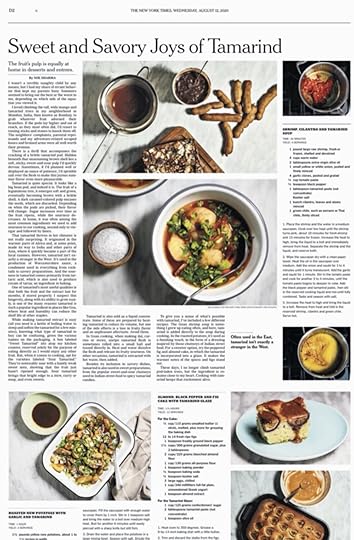
July 27, 2020
edd kimber's anzac caramel chocolate slices
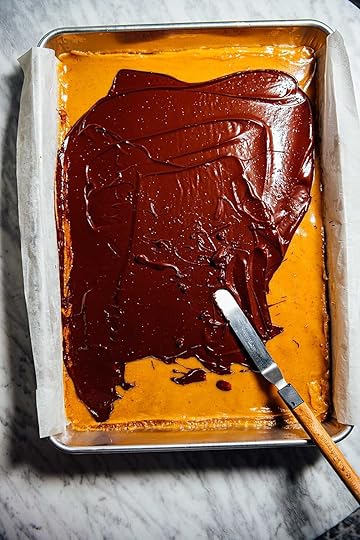
As the fall cookbook season slowly approaches us, one of the book’s I’m particularly excited about is Edd Kimber’s , One Tin Bakes (Kyle Books, 2020). Edd’s a pastry whiz and this book has an exciting theme that run through out the book, a baking tray. You won’t need bundt pans or different sized cake pans, just a 9 by 13 inch [22 by 33 cm] baking tray that’s about 2 inches [5cm] deep to prepare the recipes in this book.
Edd’s desserts are masterfully wide ranging from the anzac bars featured here today to tahini swirl buns, and a gorgeous plum roll cake. If you’re looking for a fun and inventive take on desserts, this is a book you will love for a long time to come.
The anzac bars are built with a crunchy oatmeal and coconut base followed by a chewy sweet layer of caramel, a layer of bittersweet chocolate, and a light sprinkling of salt flakes. Every bite is a combination of different textures and tastes and I think this is a dessert that is a wonderful finish to a summer barbecue, but of course, you can eat these whenever you want.

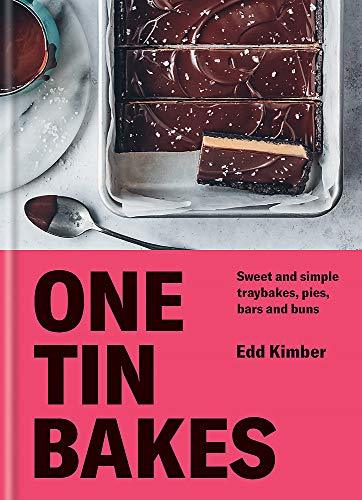
One Tin Bakes: Sweet and simple traybakes, pies, bars and buns
By Kimber, Edd
edd kimber’s anzac caramel chocolate slices (recipe from One Tin Bakes 2020, reprinted with permission from Edd Kimber and Kyle Books)
Makes 20
For the anzac base
85g (3oz/2⁄3 cup) plain (all-purpose) flour
60g (21⁄4oz/3⁄4 cup) rolled oats
40g (11⁄2oz/1⁄2 cup) desiccated coconut
1⁄4 teaspoon flaked sea salt
75g (23⁄4oz/2⁄3 stick) unsalted butter
2 tablespoons golden syrup or clear honey
100g (31⁄2oz/1⁄2 cup – 2 teaspoons) light brown sugar
1⁄4 teaspoon bicarbonate of soda
for the caramel filling
100g (31⁄2oz/7 tablespoons) unsalted butter
397g (14oz) can condensed milk 2 tablespoons golden syrup or clear honey
55g (2oz/1⁄4 cup) light brown sugar
for the topping
200g (7oz) dark chocolate,
melted flaked sea salt, for sprinkling (optional)
Preheat the oven to 180°C (350°F), Gas Mark 4. Line the baking tin with a piece of parchment paper that overhangs the two long sides of the tin, securing in place with metal clips. To make the base, combine the flour, oats, coconut and salt in a large bowl. Place the butter, golden syrup or honey and sugar in a saucepan and cook over a medium heat, stirring every now and then, until melted. Remove from the heat and add the bicarbonate of soda and 1 tablespoon of water, stirring together for a minute until the mixture is a little foamy. Pour this over the oat mixture and mix together until well combined. While the Anzac mixture is still warm, tip it into the prepared tin and press into a flat and even layer. Bake for 20–25 minutes, or until golden brown and a little darker around the edges. Leave to cool in the tin while you make the caramel. Add all the caramel filling ingredients to a medium-sized saucepan and cook, stirring constantly, until the mixture comes to a simmer. Reduce the heat to low and continue to stir, scraping the bottom of the pan regularly to prevent catching, for 10–15 minutes, until the mixture has thickened and darkened a shade or two. Remove from the heat and pour the caramel over the base. This mixture is very hot, so ease it into the corners by lifting and tilting the tin as needed. Set aside to cool for 30 minutes. For the topping, pour the melted chocolate over the caramel and use an offset spatula to spread it out evenly. Pop the tin in the refrigerator and leave for a couple of hours to allow everything to fully set (if you want to sprinkle with sea salt, allow the chocolate to turn a little tacky before sprinkling, otherwise it will sink into the chocolate). To serve, remove from the tin using the parchment paper and cut into squares. I keep these in the refrigerator, as the chocolate isn’t tempered, but I allow them to come to room temperature before serving as the textures will be at their best. Store in a sealed container for 4–5 days.
NOTE If you have an instant-read thermometer, the caramel, when ready, should reach 112°C/235°F.
July 24, 2020
lamb biryani
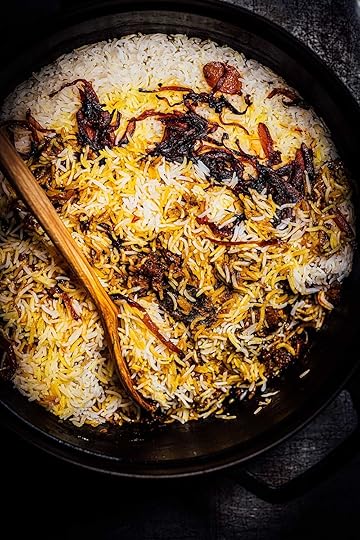
A bit of exciting news, some of you might have noticed that I’ve been writing a lot more at Serious Eats, well I’m happy to share that it’s now officially a regular monthly column on food science. This month, I’m exploring the science behind yogurt based marinades and to kick it off I’m sharing my lamb biryani recipe. Get the recipe at Serious Eats. Next week, I’ll get into the deeper details of what’s actually happening based on a few experiments. One note, when making the biryani, get pandan water, it gives it that extra special aroma.
Recently, The Flavor Equation (learn more here) was named as one of the cookbooks to look forward to by Eater and PBS/KQED. The pandemic has changed the original plan for my book tour but I will be participating in a variety on online book tours and events later this Fall. More details to come soon.
July 19, 2020
sous vide caramelized white chocolate
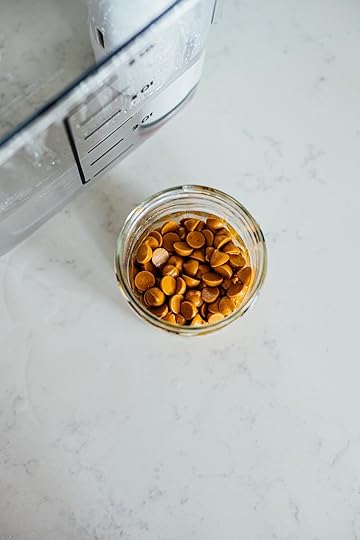
This isn’t something groundbreaking by any means but the strength of this method lies in its simplicity and convenience. Caramelizing white chocolate can be accomplished by heating the chocolate in a warm oven or in a microwave. But depending on how these methods are performed, you can destroy the structure of white chocolate, dry it out (if you use a wide baking dish), and also run the risk of over-burning the chocolate (microwaves are notorious for this). After attempting several different methods to make caramelized white chocolate at home, I’ve found the sous vide to be the best, least stressful, and something I can leave and walk away from and get the other stuff I need done. I use the Joule Sous Vide that I’ve really grown to love over the years.
Though the term “caramelize” is applied to this, it involves two separate reactions;
Caramelization of Sugars - this involves a bunch of different reactions where the sugars like lactose (milk sugar), sucrose, glucose, and fructose undergo a series of complex reactions to produce the bittersweet tastes, toasty and nutty aromas, and the caramel family of brown colored pigments. This reaction occurs in the presence of heat.
The Maillard reaction - a distinctly separate reaction from caramelization. Reducing sugars react with the amino acids present in proteins to produce new flavors and brown colored pigments.
Both of these reactions occur simultaneously in the chocolate. Other flavor reactions that also occur involve the fat present in the chocolate, some of the lipids (fats are a type of lipid) undergo oxidation etc and change their flavor.
Method: You can scale this method as needed. Canning and old jam jars work great here because they can withstand the increase in air pressure and temperature. If you have a sous vide cooking container, by all means use that.
Makes 1 cup
1 cup white chocolate
Place the chocolate chips in a heat-proof jar, seal with a lid and place it in a wide and deep enough heat-proof container or Dutch oven. Fill the pot with enough water to ensure that water is slightly above the chocolate chips. Seal the mouth of the container of Dutch oven tightly with cling wrap to form a seal. Set the sous vide to 200F/93C for 4 hours. The chocolate will turn a toffee brown color, remove the jar from the water, cool before using. The chocolate will stay good for up to 1 month in an airtight container.
July 7, 2020
spiced lamb kebabs
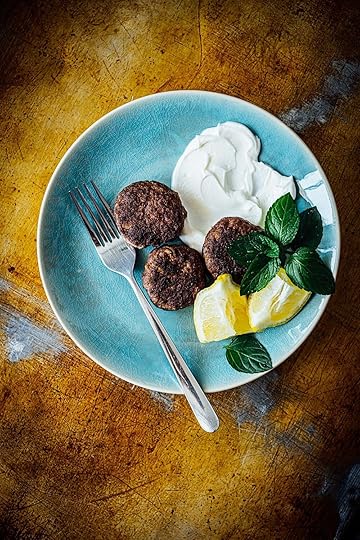
Disclaimer: This post was sponsored by the American Lamb Board . All opinions expressed are solely my own.
I’ve used American ground lamb meat to prepare these spiced kebabs. The recipe itself is very simple and quick but you will need to use a few spices to flavor the meat. Often when I’m in a rush and need to make dinner fast, ground meat like lamb is an option I turn to. Because the meat is ground it not only quicks quickly but it also absorbs flavors with ease.
There is one thing that you might notice that’s different, instead of using an egg or bread crumbs as a binding agent, I’ve used chickpea flour. Chickpea flour is sometimes used as a binding agent in Indian cooking especially when making kebabs with ground meat. The trick is to make sure there are no lumps so mix the flour with the spices separately and then add it to the ground meat.
These kebabs make an excellent side to a meal but also can be used in sandwiches and flatbreads and the recipe can be easily converted to make burgers (divide the meat up into 4 large patties). A few wedges of lime or lemons and a green chilli or two with a plate of warm flatbreads like a paratha or naan and yogurt is another way we love to eat these in our home.
Ground lamb kebabs
Check out the American Lamb Board to learn more about lamb and the different options available to cook with. You can use ghee, olive oil, or a neutral oil like grapeseed oil to cook the kebabs. For an extra-bump of heat, add a minced green chilli such as serrano or Thai chilli.
Makes 12 kebabs
1 lb [455 g] American ground lamb
1 shallot, minced
1 tablespoon grated ginger
1 garlic clove, peeled and grated
2 Tbsp chickpea flour
1 tsp ground black pepper
1 tsp ground nutmeg
1 tsp ground cinnamon
1 tsp ground cumin
1 tsp ground red chilli
1 tsp fine sea salt
½ tsp ground green cardamom
2 Tbsp ghee, olive oil, or neutral oil for frying
Place the lamb, shallot, ginger, and garlic in a medium mixing bowl and mix with a fork. In a small bowl, mix the chickpea flour, black pepper, nutmeg, cinnamon, cumin, chilli, salt, and cardamom till smooth and free from lumps. Sift the dry ingredients over the meat in the bowl and fold to combine. Divide the mixture into 12 round balls and shape using greased hands to flatten and form 1 inch [2.5cm] wide discs, place the kebabs on a clean plate.
Line a tray with absorbent paper towels. Heat 1 Tbsp of the oil in a medium skillet over medium-high heat. Cook the kebabs in batches, about 2 ½ to 3 minutes on each side, till the bottoms begin to turn a darker shade of golden brown. Transfer the cooked kebabs to the lined plate to absorb any excess oil. Serve hot or warm with rice or flatbread and a salad or pickled vegetables.
June 23, 2020
carrot raita and tadka science for serious eats

You’ve seen me use the Indian technique of tadka before in Season and you will again in my new book, The Flavor Equation and also in my other recipes but I’ve been meaning to approach it from the lens of science to explain what it does and how it works. I’ve finally written about it for my new column at Serious Eats and I’ve included several tips that I use in my kitchen with this flavor building technique.
To learn more about the science of tadka and how to apply some of the principles behind it in a recipe (Carrot Raita) head over to Serious Eats.
Happy cooking
xx



